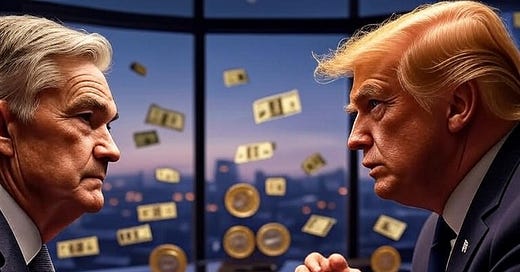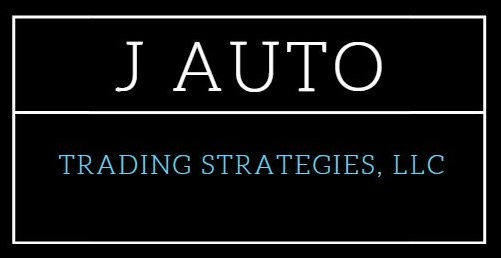The Fed’s Quiet Betrayal: Years of Unauthorized ECB Funding Now Collide with Trump's Tariff Strategy
JULY 2, 2025
The Fed’s Quiet Betrayal: Years of Unauthorized ECB Funding Now Collide with Trump's Tariff Strategy
Over $4.6 billion in secret dollar flows to the ECB since July 2024—can the Federal Reserve justify bankrolling Europe against U.S. interests? While President Trump enforces tariffs to reshore manufacturing and rebalance trade, Jerome Powell’s Federal Reserve issues weekly liquidity swaps to the European Central Bank—unaudited, unauthorized, and arguably unconstitutional. These aren’t crisis measures; they’re routine foreign subsidies designed to blunt the economic consequences of Trump’s national security strategy.
Swap Lines: From Emergency Tool to Unaccountable Pipeline
Liquidity swaps originated under Section 14 of the Federal Reserve Act to combat dollar shortages during global crises. In 2008 and 2020, they prevented systemic contagion from disrupting U.S. markets, particularly when American banks held dollar-denominated contracts abroad. Their legal purpose was clear: protect U.S. financial stability and contractual obligations.
But that purpose has been stretched beyond recognition. Since 2013, the Fed has maintained standing swap lines with the ECB and other central banks without requiring crisis conditions, White House consultation, or oversight. The $94.8 million swap on March 26, 2025, exemplifies this shift to a permanent pipeline rather than a temporary fix. The Federal Reserve Act does not authorize the Fed to act as a foreign development bank, and certainly not to neutralize presidential trade enforcement tools.
ECB financial statements for 2024 reveal a loss of €7.9 billion, driven by higher interest expenses on liabilities like the TARGET system, outpacing income from securities and foreign reserves. This financial strain, persisting into 2025 with a stagnant 0.1% GDP growth in Q1, suggests the ECB relies on external liquidity—potentially including Fed swaps—to manage its balance sheet. Yet, this dependency raises questions about whether these funds stabilize U.S. interests or prop up a struggling eurozone.
The Collision Point: Trump’s Tariffs vs. Powell’s Subsidies
President Trump’s 2025 tariff regime—anchored by a 145% duty on Chinese goods and a 25% tariff on European steel and autos—aims to disrupt adversarial supply chains, bring production back home, and force trade renegotiations. Enacted via the Trade Expansion Act and the International Emergency Economic Powers Act, these tariffs are a national security strategy to address the $180 billion U.S.-EU goods deficit in 2024.
Yet, week after week, Powell’s Fed counters this pressure. On June 25, 2025, the Fed funneled $37.1 million to the ECB, just days before Powell’s Sintra declaration on July 1: “We’re aware that is a big contribution that we can, and do, and will continue to make to global financial stability.” Delivered amid tariff discussions, this vow suggests a deliberate strategy to neutralize U.S. trade leverage. That $37.1 million likely softened the blow to European auto exporters, undermining Trump’s intent to force change.
Is It Legal? A Question of Limits
Supporters cite Section 14’s broad language, allowing swap lines to preserve global stability during crises, but the statute’s intent was tied to U.S. contractual exposure, not routine foreign support. Today’s swaps:
Lack connection to U.S. banking or contract risk
Operate without executive coordination or approval
Exist in a legal gray zone with no audits or public disclosures
ECB statements show no direct reporting on how Fed swap dollars are used, with the Eurosystem’s foreign currency net position rising to €342.9 billion by June 6, 2025. The absence of transparency—coupled with no statutory authority to override tariffs or fund foreign resilience—suggests an overreach. The establishment narrative of “global stability” masks a potential violation of the President’s trade powers.
What the Data Shows: Subsidy, Not Stabilization
From July 3, 2024, to June 26, 2025, the Fed executed over 40 swaps with the ECB, totaling $4.6 billion, with peaks like $110.5 million on March 12, 2025. Yet, eurozone GDP grew just 0.1% in Q1 2025, per ECB data. A plot of these swaps against output reveals a mismatch: funds prop up banks, not economies. ECB losses and a declining PEPP portfolio (down €7.5 billion monthly since December 2024) indicate reliance on liquidity to offset policy costs, not to drive growth.
This is subsidy, not stabilization. The swaps blunt Trump’s tariff pressure, delaying EU reforms or trade concessions.
National Interest: The Fed vs. the President
This is a collision of power, not policy:
Congress never authorized this liquidity pipeline
No oversight body assesses strategic alignment
No statutory framework permits funding resistance to U.S. actions
Trump’s tariffs drive manufacturing back, but Powell enables exporters to endure. The Fed’s independence, if unchecked, risks becoming a tool to override elected leadership, especially as ECB data shows no growth benefit from these funds.
What Must Be Done
Abandon the euphemism “swap lines.” These are unauthorized foreign subsidies. Action is urgent:
First, by the August FOMC meeting, Congress must demand disclosure of recipients and ECB fund use.
Second, enact legislation requiring executive clearance for swaps during trade enforcement.
Third, the White House should file FOMC objections, request Treasury-Fed consultations, and propose coordination amendments.
Fourth, encourage public pressure—urge constituents to demand answers from lawmakers.
The Stakes
This is about sovereignty. Without action, the Fed could dictate trade outcomes from an unelected boardroom by 2026, turning dollar diplomacy into a shadow government that nullifies the President’s agenda. As of 11:54 AM EDT on July 2, 2025, this betrayal demands accountability.
Analysis of ECB Statements
ECB financial statements for 2024 (released February 19, 2025) and weekly Eurosystem balance sheets (e.g., June 6, 2025) show losses (€7.9 billion in 2024) and a rising foreign currency position (€342.9 billion), reflecting reliance on external liquidity amid stagnant growth (0.1% Q1 2025). While not explicitly detailing Fed swap use, the ECB’s interest income from U.S. dollar-denominated securities and its need to offset TARGET liabilities suggest these funds play a role. The establishment claims this supports price stability, but the lack of growth and transparency challenges this, hinting at a subsidy to maintain eurozone banks against tariff pressures—aligning with the article’s critique.
Copyright © 2025 J Auto Trading Strategies, LLC. All rights reserved.
The information and content provided herein are for informational purposes only and do not constitute financial, investment, legal, or other professional advice. The views and opinions expressed are those of the author and do not necessarily reflect the official policy or position of J Auto Trading Strategies, LLC or any other entity. Any reliance you place on such information is strictly at your own risk.
J Auto Trading Strategies, LLC and its affiliates, officers, directors, employees, or agents shall not be liable for any loss or damage, including without limitation, indirect or consequential loss or damage, or any loss or damage whatsoever arising from the use of or reliance on this content. Trading and investment involve significant risks, and past performance is not indicative of future results.
This content is protected by copyright law and may not be reproduced, distributed, or transmitted in any form or by any means, including photocopying, recording, or other electronic or mechanical methods, without the prior written permission of J Auto Trading Strategies, LLC, except as permitted by applicable law.





